
"Who Are Your People?" A Reading List of Strong, Spirited Southern Ladies
Mimi Herman Recommends Alice Walker, Karen Russell, and More
If you grow up in the South, as I did, there’s a pretty good chance you’ll be asked, “Who are your people?” whenever you meet another Southerner—as if once they’ve located you in the context of grandparents, cousins and aunts, they can relax in the knowledge of who you are. Sometimes it’s about snobbery: “Are your people worthy of mine?” But in the most delightful sense, it’s about making connections, a sense that we’re all related in some way.
In my new novel, The Kudzu Queen, I didn’t set out to make family an important element of the story. But Southern characters have their people too, and they tend to gather them around, so it was fitting that my fifteen-year-old narrator, Mattie Lee Watson, would invite those she saw as family into her story: not only her parents and brothers and her dead Aunt Mary, but also her best friend Lynnette and oldest friend Rose, both of whom brought with them their own families. Mattie has a way of making almost everyone family over the course of the book, except perhaps her nemesis, Glynis Carpentier.
When I was fifteen myself, my Driver’s Ed teacher told us not to look at the wheels of the semis speeding beside us, because we tend to veer toward whatever we’re looking at. Not wanting to veer into any other writer’s lane, I stayed away from books set in the South and ones with adolescent narrators while writing my book.
But after finishing The Kudzu Queen, I began rereading the books I’d loved in my adolescence and twenties, and I realized something else about families: Characters have literary ancestors, too. Everything we read affects our literary DNA, which, like physical DNA, can change over the course of a lifetime. Even though I hadn’t read some of these books in years, something about them had stayed with me. Mattie’s family tree extended well beyond the pages of her book.
*
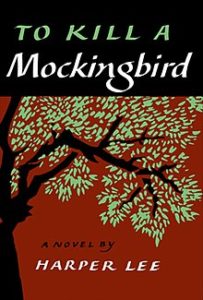
To Kill a Mockingbird, by Harper Lee
Lee Smith refers to Mattie as “the most appealing young heroine since Scout,” yet I didn’t even think about Scout until I’d finished writing The Kudzu Queen. But once she came into my head, I realized that Mattie is exactly what Scout might have grown into a few years down the road: sassy and fierce and perhaps too smart for her own good—certainly too smart for the good of anyone who aims to hurt people she cares about. She makes up her own mind about people, and while she’s stubborn, she changes her opinions as she learns new information. I like a narrator who runs on sass, pragmatism and wonder, so it makes sense that Scout feels like part of Mattie’s family.
To Kill a Mockingbird is a book that could serve as a primer on creating credible, complex and engaging characters. The language is extraordinary, both in the dialogue and in Scout’s monologues on the ways her world works. Harper Lee’s ear in writing and revising this book was pretty close to pitch-perfect. To Kill a Mockingbird is a relative’s house I recommend revisiting, for the family you’ll find there and the music of the narration.
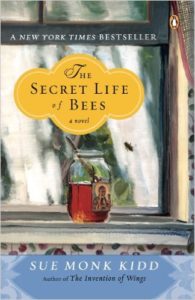
The Secret Life of Bees, by Sue Monk Kid
Another member of Mattie’s family is Lily Owens, the narrator of Sue Monk Kidd’s beautiful book, The Secret Life of Bees. Lily, like Scout, is pragmatic, sometimes sassy and full of wonder. In The Secret Life of Bees, Lily runs away from an intolerable life of grief, guilt and Martha White grits to find a new home and, finally, family.
Like Lee, Kidd places her story in the uneasy racial crossroads that define the South to most of America, and America to most of the world. It is almost impossible to write a novel set in the South without trying to find an understanding of its complicated and ongoing racial history. And yet this involves risks for a writer: the dangers of stereotyping, of seeing characters and situations through the Vaseline-smeared lenses of sentimentality, and of perpetuating racism even while trying to eliminate it. If either of these books were published today, I think we’d see some changes, but I believe both Lee and Kidd did what every author has to do: They saw—and heard—their characters as clearly and carefully as they could, and were honest and thoughtful in every sentence.
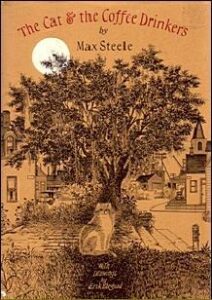
The Cat and the Coffee Drinkers, by Max Steele
The Cat and the Coffee Drinkers was first published as a short story in The New Yorker in 1963. Six years later, Harper & Row released a beautiful standalone hardback edition, with engaging drawings by Erik Blegvad.
In this book, you’ll find Miss Effie Barr, a southern kindergarten teacher who is highly selective about the 12 students she admits to her class each year. Miss Effie is renowned in her small town for her ability to transform five-year-olds into lifelong readers, but she also teaches them a number of practical skills, such as how to sweep a floor, how to paint flowerpots and how to lie when necessary. Miss Effie shares the sass, pragmatism and wonder of her younger relatives, Scout and Lily, but as an adult, her sassiness comes out as muttered sarcasm about parents, her pragmatism has her bringing in extra income by selling products made by her students, and her wonder emerges in her excited tone as she reads aloud.
Miss Effie is family, too, not just to Mattie and Scout and Lily, but to Mattie’s Home Ec teacher, to the mayor’s wife who teaches Mattie deportment and empathy, and even to Mattie’s mother, who is strict on rules but soft on follow-through. If you don’t have a Miss Effie in your life, I suggest you borrow Max Steele’s for the hour it will take to read this little book.
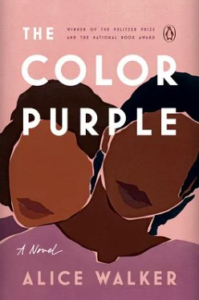
The Color Purple, by Alice Walker
I first read The Color Purple when I was in college. Like Mattie, Scout and Lily, Celie, the narrator of this epistolary novel, is young enough to feel wonder and old enough to know the necessity of pragmatism. But in Celie’s case, the pragmatism is primary; she can’t afford the luxury of sass. When she is fourteen, her father begins raping her. She ends up having two children, who are taken from her, before he gives her away, with the bonus of a cow, to a man who would prefer to marry her younger sister. And this is all in the first pages of the book.
And yet, Celie feels wonder at her younger sister Nettie who excels at learning and teaching, at the discovery that her daughter Olivia is being raised in comfort, and finally, the wonder at the center of Celie’s life is Shug Avery, a bigger than life character who compels her in a way she’s never experienced before and who brings Celie the sass she has never been able to afford.
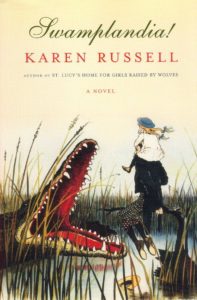
Swamplandia, by Karen Russell
In reading Swamplandia for the first time after I finished writing The Kudzu Queen, I discovered another branch of the family for my characters, relatives I hadn’t known existed. Ava Bigtree, at thirteen, is two years younger than my protagonist, but like Mattie, she lives in a landscape transformed by an invasive species, in her case the Melaleuca quinquenervia, “imported to suck the Florida swamp dry.” Like Mattie, Ava is drawn to an adult man in ways she can’t quite understand herself, and ends up in over her head, literally and figuratively, until she remembers that she has her own powers and draws upon them.
Russell’s deft juggling of language and her understanding that each character in a story has a unique dialect—even when they grow of in the same family—make Swamplandia a rich ecosystem of a novel. Ava speaks with an accent drawn from alligator wrestling and her mother’s miraculous performances. Her brother Kiwi’s syntax comes from the books he devours. The voice of her sister Ossie soars and whispers with the language she learns from ghost lovers and The Spiritist’s Telegraph, the occult tome that becomes her tour guide to the underworld and her Bible.
*
It is important to keep in mind how remarkable the drawing of each of these characters is. In the hands of unskilled writers, Southern girls and women are sometimes warped—out of convenience or lack of familiarity—into caricature: the Eccentric Belle, the Warm but Stern Mother, the Half-wild Waif. But in each of these characters, you’ll find strength and intelligence, humor and kindness, and above all authenticity rising off the page. As family traits go, these are worth having. These are my people. I hope they’ll be yours.
__________________________________
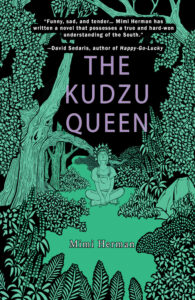
The Kudzu Queen by Mimi Herman is available from Regal House Publishing
Mimi Herman
Mimi Herman holds a BA from the University of North Carolina and an MFA in Creative Writing from Warren Wilson. She is the author of The Kudzu Queen, A Field Guide to Human Emotions, Logophilia and The Art of Learning. Her writing has appeared in Michigan Quarterly Review, The Carolina Quarterly, Shenandoah, Crab Orchard Review, The Hollins Critic, Main Street Rag, Prime Number Magazine and other journals. Mimi has performed her fiction and poetry at many venues including Why There Are Words in Sausalito, Memorial Auditorium in Raleigh and Symphony Space in New York City.



















